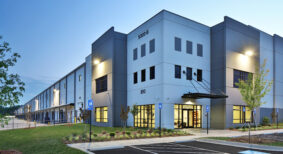Facilities across the United States and Canada are continuing to formulate plans for reopening safely and welcoming back occupants. The challenges of maintaining a safe building have evolved dramatically over the last 16 months or so, and many buildings managers will be seeking expert advice.
Thankfully, help is out there.
For one, commercial cleaning company OpenWorks is offering four tips for reopening facilities based on expert advice and insights.
These plans will of course vary a bit as regulations differ from place to place, but all business reopening plans should include the following four elements:
1. Create a cross-functional team that will oversee ongoing reopening efforts.
It’s essential to appoint leaders across all departments to oversee ongoing reopening efforts. Including at least one person from each team helps avoid conflicts and ensures everyone knows what is expected. The group’s roles should include monitoring local and state updates, developing a communication plan for employees and customers, and designating reopening tasks. The team should have regular check-ins to discuss progress and next steps along the way.
2. Prepare facilities for re-opening by first understanding the needs of employees and customers.
Conducting a survey is a great way to understand employee and customer expectations for cleaning, social distancing, and other safeguards. According to OSHA, employers should also implement engineering controls to isolate employees from workplace-related hazards.
In the case of COVID-19, measures include:
- Installing high-efficiency air filters.
- Increasing ventilation rates in the work environment.
- Installing physical barriers, such as clear plastic sneeze guards.
- Installing a drive-through window for customer service.
- Specialized negative pressure ventilation in some settings, such as for aerosol-generating procedures (e.g. airborne infection isolation rooms in healthcare settings and specialized autopsy suites in mortuary settings).
This is also a good time to reevaluate cleaning and disinfection procedures. Review the CDC’s guidelines, and research any specific recommendations for the business type.
It’s also important to consider how to accommodate social distancing. Is there sufficient PPE, disinfectant, hand sanitizer, and other materials? Planning ahead will prevent any confusion or mishaps on reopening day.
3. Set policies and procedures that will dictate who will return to work and when.
Many companies are operating under a staged reopening process with split shifts of remote and in-person work to prevent crowding. It’s important also to communicate policies on travel, guests, and at-risk groups and caregivers.
In the event of a COVID-19 incident in the workplace, how will employees be expected to communicate? How will the office be evacuated and disinfected? Have a plan in place for what will be done and how long employees will remain out of the office following an incident. A qualified commercial cleaning company will be able to disinfect the space from top to bottom so employees can return safely.
4. Prepare customers by adding signage that makes them aware of safety requirements.
Customers will be excited to return to business as usual, and it’s important to help them do so safely. Continuously monitor local guidelines to maintain compliance. Communicate the steps being taken and consider adding signage to help customers understand expectations. Employees should also be aware of requirements and what to do if customers aren’t following them.










